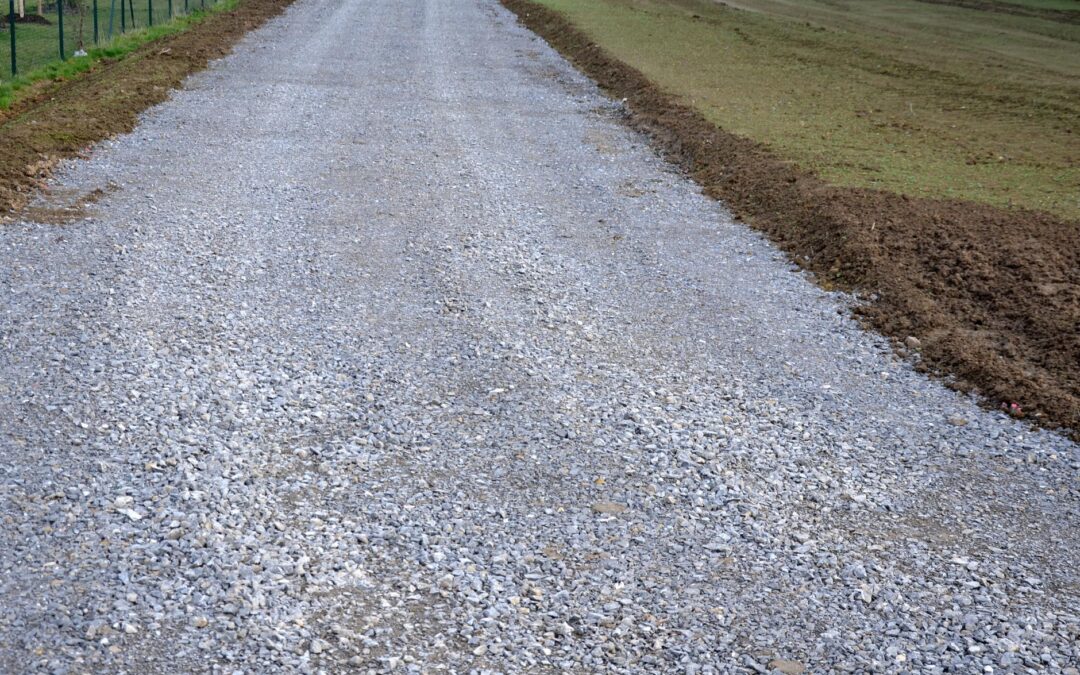Why Gravel Roads Need Grading and Leveling
Gravel roads are a staple in many construction sites, rural areas, and remote locations. They provide a cost-effective and versatile solution for transportation and access, but they require consistent maintenance to stay functional. Over time, gravel roads can become uneven, rutted, and difficult to navigate, making grading and leveling an essential part of their upkeep.
Understanding the science behind gravel road wear and tear can help site managers and contractors appreciate the importance of regular maintenance. This knowledge, combined with the right tools, like skid steer grading attachments, ensures that gravel roads remain safe, durable, and efficient.
Keep your gravel roads maintained with the toughest graders on the market. Shop our line of tractor and skid steer attachments.
The Science Behind Gravel Road Wear and Tear
Gravel roads degrade due to a combination of environmental factors and usage patterns. Here are the primary reasons:
1. Traffic and Load Stress
Heavy machinery, trucks, and vehicles put immense pressure on gravel roads. Repeated use compacts certain areas, creating ruts and depressions. Uneven compaction leads to pooling water, which only makes the problem worse.
2. Weather and Erosion
Rain, wind, and freeze-thaw cycles can destabilize a gravel road. Water runoff washes away fine particles, leaving behind larger stones and uneven surfaces. Frost heave during colder months lifts and shifts sections of the road, creating bumps and potholes.
3. Material Migration
Without proper grading, gravel tends to migrate to the sides of the road, forming ridges. The center of the road becomes lower, disrupting drainage and encouraging further deterioration.
The Role of Grading and Leveling
Grading and leveling are essential processes to restore the integrity and functionality of a gravel road. Here’s why:
1. Ensures Proper Drainage
One of the primary purposes of grading is to establish or restore the road’s crown. A properly graded road allows water to run off to the sides, preventing pooling that can weaken the road’s structure.
2. Restores Smoothness and Usability
Leveling eliminates bumps, ruts, and depressions, making the road safer and more comfortable to drive on. This is especially critical for construction sites where equipment and materials need to be transported efficiently.
3. Reduces Long-Term Costs
Periodic maintenance through grading and leveling prevents small issues from turning into costly repairs. A well-maintained road lasts longer and requires fewer resources to keep operational.
4. Preserves Materials
Grading redistributes gravel evenly across the road, minimizing material loss and reducing the need for frequent replenishment.
Tools for Effective Gravel Road Maintenance
Modern tools and machinery have made gravel road maintenance more efficient. Among these, skid steer grading attachments are indispensable for contractors and site managers.
At Roadrunner Equipment our skid steer grading attachments are made entirely in America and built to last.
Here are some of the reasons our skid steers are the do-it-all tool for your gravel road grading needs.
1. Versatility
The Roadrunner Equipment C-Series skid steer road graders are adaptable and can be used for various tasks, including grading, leveling, snow plowing, and spreading gravel. They’re compact enough to maneuver in tight spaces but powerful enough to handle tough jobs.
2. Precision and Control
Our grading attachments designed for skid steers provide exceptional control over the leveling process with both single and dual hydraulic blade options. Operators can make fine adjustments to achieve the desired road profile.
3. Cost-Effectiveness
For contractors, investing in skid steer grading attachments is more affordable than hiring larger, specialized equipment. These attachments enhance the utility of an existing skid steer, maximizing ROI.
4. Ease of Use
Modern grading attachments are user-friendly, allowing operators with minimal training to perform quick and effective road maintenance.
Best Practices for Gravel Road Upkeep
To get the most out of your gravel road maintenance efforts, consider these best practices:
1. Conduct Regular Inspections
Check your gravel roads periodically for signs of wear, such as ruts, potholes, or poor drainage. Early detection of issues prevents more extensive damage.
2. Use the Right Equipment
Invest in high-quality skid steer grading attachments tailored to your needs. Ensure that your equipment is well-maintained and ready for use.
3. Time Your Maintenance
Plan grading and leveling activities during optimal weather conditions. Dry conditions are best for reshaping and redistributing gravel.
4. Monitor Gravel Quality
Ensure that the gravel used on your roads has the right mix of fine and coarse materials. High-quality gravel improves road durability and minimizes wear.
Why Regular Maintenance Matters
Neglecting gravel road maintenance can lead to significant consequences, including increased vehicle wear and tear, longer travel times, and higher repair costs. For construction site managers, this translates into delays and reduced efficiency. For contractors, poorly maintained roads can hurt your reputation and bottom line.
Regular grading and leveling, combined with the right tools and practices, keep gravel roads in optimal condition. By investing in skid steer grading attachments, you can streamline your maintenance efforts and ensure that your roads remain functional and safe.
Keeping Up with Upkeep
Gravel road upkeep is a critical aspect of maintaining productivity and safety on construction sites and other work environments. Understanding the factors that contribute to road wear and implementing effective grading and leveling strategies ensures long-term usability and cost savings.
Skid steer grading attachments are a game-changer, offering efficiency, precision, and affordability. Get a Roadrunner Equipment skid steer grader attachment to see the benefits in both performance and profitability for yourself first-hand.

